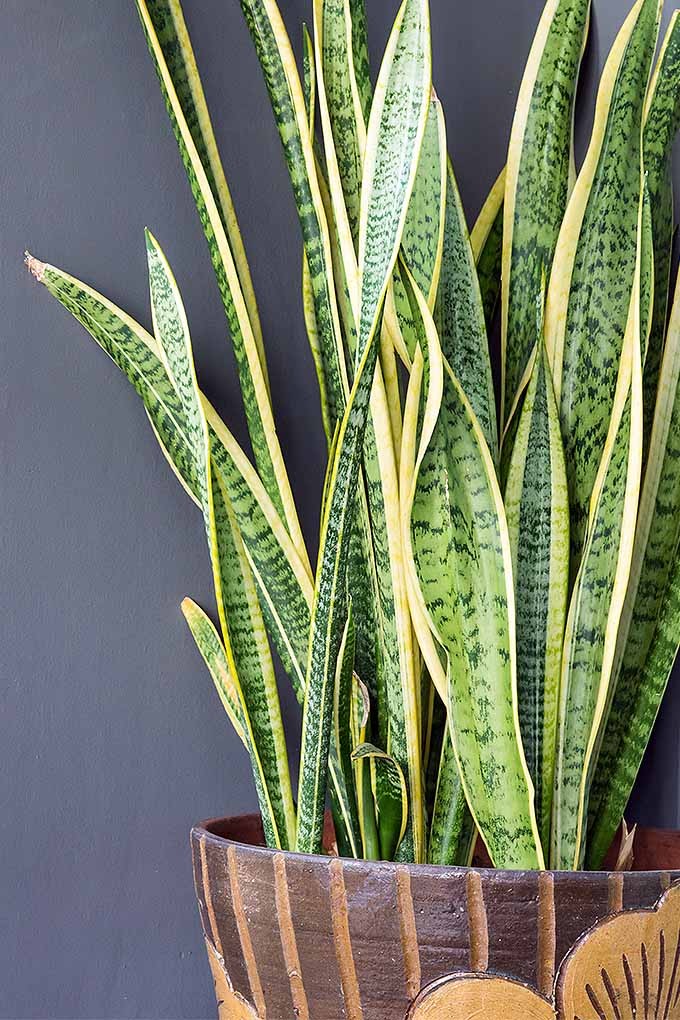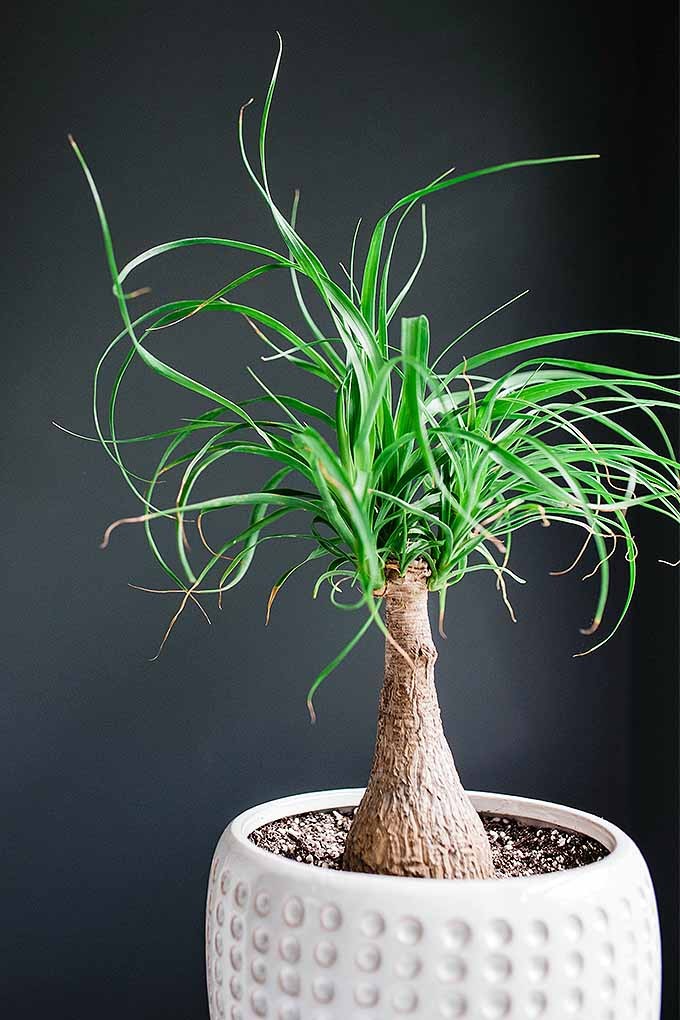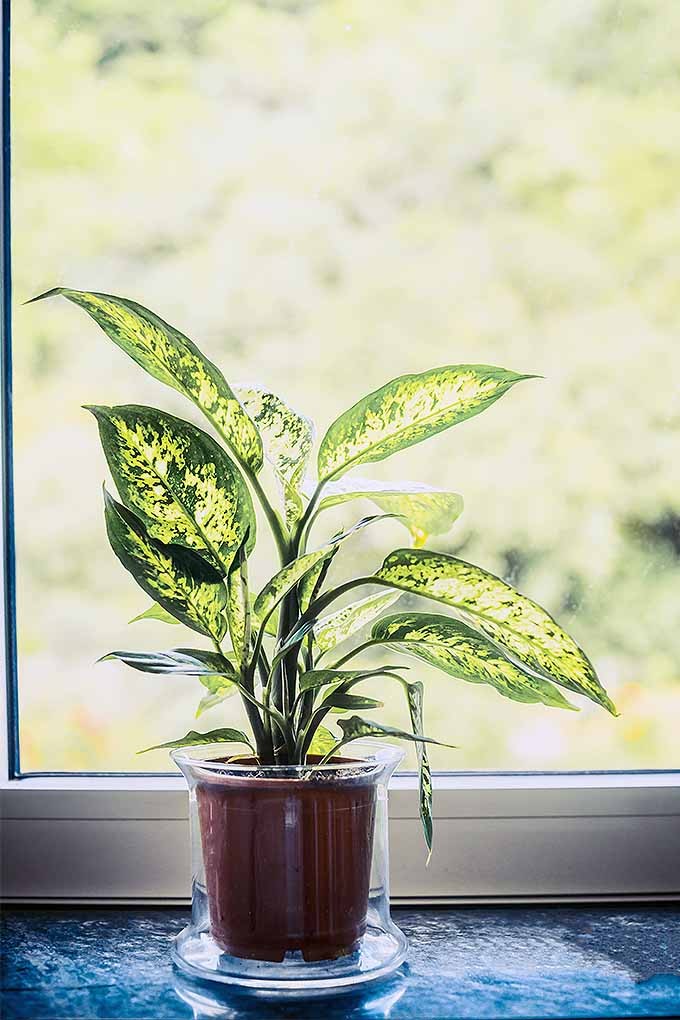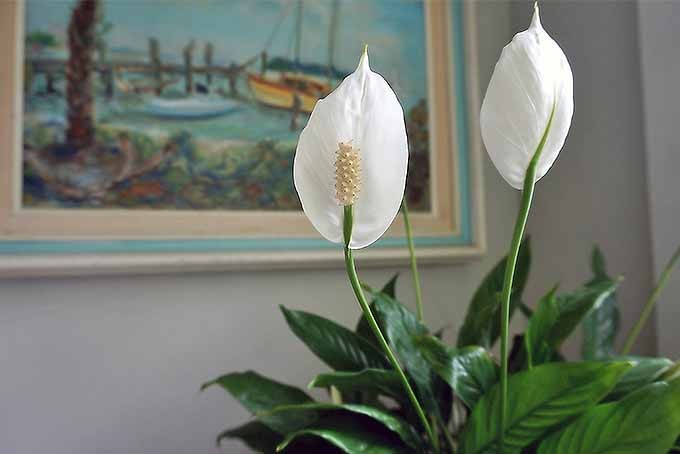Houseplant care encompasses creating a thriving indoor environment by nurturing your green companions with essential maintenance. At CARS.EDU.VN, we provide detailed information on effectively caring for houseplants, ensuring they flourish and enhance your living space. Discover practical tips on indoor gardening, plant maintenance, and sustainable plant care, providing solutions to your indoor gardening needs.
1. Understanding Houseplant Care Basics
Caring for houseplants involves understanding their fundamental needs. These include providing the right amount of light, water, and nutrients, as well as ensuring proper temperature and humidity levels. Each plant species has unique requirements, making it essential to tailor your approach accordingly.
1.1. The Importance of Light for Houseplants
Light is vital for photosynthesis, the process by which plants convert light energy into chemical energy for growth. Different houseplants require varying amounts of light. According to a study by the University of Missouri Extension, understanding light requirements is crucial for maintaining plant health.
- High Light: 6+ hours of direct sunlight
- Medium Light: 4-6 hours of indirect sunlight
- Low Light: Less than 3 hours of indirect sunlight
1.2. Watering Techniques for Healthy Growth
Proper watering is essential to prevent both underwatering and overwatering, both of which can be detrimental to plant health. The key is to monitor the soil moisture and water only when necessary. The Old Farmer’s Almanac provides guidance on watering houseplants effectively.
- Check Soil Moisture: Use your finger to check the moisture level an inch below the surface.
- Water Thoroughly: When watering, ensure the water drains through the drainage holes.
- Adjust Seasonally: Reduce watering frequency during the dormant winter months.
1.3. Soil and Nutrients for Optimal Plant Health
The right soil provides essential nutrients and supports root development. A well-draining potting mix is generally recommended for most houseplants. Fertilizing regularly during the growing season helps replenish nutrients.
- Potting Mix: Use a soil-less mix of peat moss, vermiculite/perlite, and compost.
- Fertilizing: Apply water-soluble fertilizer every 2-4 weeks during the growing season.
- Soil pH: Aim for a pH level between 6.0 and 7.0 for most houseplants.
2. Selecting the Right Houseplants for Your Space
Choosing the right houseplants depends on your environment and lifestyle. Consider factors such as light availability, humidity levels, and your level of commitment to plant care.
2.1. Top Low-Maintenance Houseplants
For beginners or those with busy lifestyles, low-maintenance houseplants are an excellent choice. These plants are resilient and can tolerate some neglect.
| Plant | Light Requirement | Watering | Additional Care |
|---|---|---|---|
| Snake Plant | Low to High | Once every 2-4 weeks | Tolerates drought; purify air. |
| Pothos | Low to Medium | Once every 1-2 weeks | Easy to propagate; great for hanging baskets. |
| ZZ Plant | Low to Medium | Once every 2-4 weeks | Drought-tolerant; tolerates low light. |
| Spider Plant | Medium to High | Once every 1-2 weeks | Produces plantlets; air-purifying. |
| Peace Lily | Low to Medium | Once every 1-2 weeks | Elegant blooms; air-purifying. |




2.2. Best Houseplants for Air Purification
Certain houseplants are known for their ability to remove toxins from the air, improving indoor air quality. NASA conducted a study on the best houseplants for air purification.
| Plant | Toxins Removed | Additional Benefits |
|---|---|---|
| Snake Plant | Formaldehyde, Xylene | Low maintenance, converts CO2 to oxygen at night. |
| Spider Plant | Formaldehyde, Xylene | Easy to propagate, safe for pets. |
| Peace Lily | Formaldehyde, Benzene | Beautiful blooms, tolerates low light. |
| English Ivy | Benzene, Trichloroethylene | Effective air purifier, versatile for growing. |
| Aloe Vera | Formaldehyde | Medicinal properties, easy to care for. |
2.3. Houseplants for Different Light Conditions
Matching the right plant to the available light is crucial for its health and growth.
| Plant | Light Condition | Watering | Key Features |
|---|---|---|---|
| Snake Plant | Low to High | Once every 2-4 weeks | Versatile, tolerates various light levels. |
| ZZ Plant | Low to Medium | Once every 2-4 weeks | Thrives in low light, drought-tolerant. |
| Peace Lily | Low to Medium | Once every 1-2 weeks | Prefers indirect light, elegant blooms. |
| Spider Plant | Medium to High | Once every 1-2 weeks | Requires bright light, produces plantlets. |
| Aloe Vera | High | Sparingly, when dry | Needs direct sunlight, medicinal properties. |
3. Essential Houseplant Care Techniques
Mastering essential care techniques ensures your houseplants remain healthy and vibrant.
3.1. Repotting: When and How
Repotting is necessary when plants outgrow their containers or when the soil becomes depleted. The frequency depends on the plant’s growth rate.
- Signs: Roots circling the pot, slow growth, soil drying out quickly.
- Process: Choose a pot 1-2 inches larger, use fresh potting mix, and gently loosen the roots.
- Timing: Best done in the spring, during the active growing season.
3.2. Pruning and Shaping Your Houseplants
Pruning helps maintain the plant’s shape, encourages new growth, and removes dead or diseased foliage.
- Tools: Use clean, sharp pruning shears or scissors.
- Technique: Remove dead leaves and stems, trim leggy growth, and shape the plant as desired.
- Benefits: Improves air circulation, promotes bushier growth.
3.3. Controlling Pests and Diseases
Houseplants can be susceptible to pests and diseases. Regular inspection and prompt treatment are essential.
- Common Pests: Spider mites, aphids, mealybugs.
- Organic Solutions: Insecticidal soap, neem oil, horticultural oil.
- Prevention: Maintain good air circulation, avoid overwatering, and quarantine new plants.
4. Advanced Houseplant Care Tips
Taking your plant care skills to the next level involves understanding more complex techniques and strategies.
4.1. Understanding Humidity and Ventilation
Most houseplants thrive in higher humidity levels than typically found in homes. Proper ventilation prevents fungal diseases.
- Humidity: Use a humidifier, pebble tray, or group plants together to increase humidity.
- Ventilation: Ensure good air circulation with fans or open windows.
- Monitoring: Use a hygrometer to monitor humidity levels.
4.2. Seasonal Adjustments for Houseplant Care
Adjusting your care routine based on the season helps plants thrive year-round.
- Spring/Summer: Increase watering and fertilizing during the active growing season.
- Fall/Winter: Reduce watering and stop fertilizing as plants enter dormancy.
- Light: Provide supplemental light during winter months if needed.
4.3. Propagating New Plants from Cuttings
Propagation allows you to create new plants from existing ones, expanding your collection.
- Stem Cuttings: Take a cutting with several leaves and nodes, place in water or soil.
- Leaf Cuttings: Certain plants, like snake plants, can be propagated from leaf cuttings.
- Rooting Hormone: Use rooting hormone to encourage root development.
5. Troubleshooting Common Houseplant Problems
Identifying and addressing common problems promptly can save your houseplants.
5.1. Yellowing Leaves
Yellowing leaves can indicate various issues, including overwatering, underwatering, nutrient deficiencies, or pests.
- Overwatering: Soil is constantly wet, roots may rot.
- Underwatering: Soil is dry, leaves are dry and brittle.
- Nutrient Deficiency: Leaves yellow from the bottom up, may need fertilizing.
5.2. Brown Leaf Tips
Brown leaf tips are often caused by low humidity, dry air, or inconsistent watering.
- Humidity: Increase humidity around the plant.
- Watering: Water consistently and thoroughly.
- Water Quality: Use filtered or distilled water to avoid mineral buildup.
5.3. Leggy Growth
Leggy growth, characterized by long, bare stems, is typically due to insufficient light.
- Light: Move the plant to a brighter location.
- Pruning: Prune back leggy stems to encourage bushier growth.
- Rotation: Rotate the plant regularly to ensure even light exposure.
6. Specific Houseplant Care Guides
Detailed care guides for popular houseplants can help you address their unique needs.
6.1. Caring for Snake Plants (Sansevieria trifasciata)
Snake plants are known for their resilience and air-purifying qualities.
- Light: Tolerates low to high light conditions.
- Watering: Water sparingly, allowing the soil to dry out completely between waterings.
- Soil: Well-draining potting mix.
6.2. Caring for Pothos (Epipremnum aureum)
Pothos plants are easy to grow and propagate, making them a popular choice for beginners.
- Light: Prefers medium to bright, indirect light.
- Watering: Allow the soil to dry out between waterings.
- Propagation: Easily propagated from stem cuttings.
6.3. Caring for Peace Lilies (Spathyphillum)
Peace lilies are elegant plants with air-purifying benefits.
- Light: Prefers low to medium light.
- Watering: Keep the soil consistently moist, but not soggy.
- Humidity: Enjoys high humidity levels.
7. Advanced Techniques for Thriving Houseplants
Elevate your houseplant care with these sophisticated methods to ensure robust and vibrant growth.
7.1. Hydroponics for Houseplants
Hydroponics is a method of growing plants without soil, using mineral nutrient solutions in a water solvent. This technique can lead to faster growth and healthier plants.
- Nutrient Solutions: Use balanced hydroponic nutrient solutions.
- Light: Ensure adequate light with grow lights if natural light is insufficient.
- Monitoring: Regularly check and adjust pH levels and nutrient concentrations.
7.2. Bioactive Soil
Bioactive soil is a living ecosystem within your plant’s pot, enhancing nutrient cycling and plant health.
- Microorganisms: Introduce beneficial bacteria and fungi.
- Organic Matter: Incorporate compost and leaf litter.
- Watering: Maintain proper moisture levels to support microbial life.
7.3. Training and Support Systems
Some houseplants benefit from training to grow in specific shapes or directions, often requiring support systems.
- Trellises: Ideal for climbing plants like ivy and pothos.
- Stakes: Useful for supporting upright growth of plants like orchids.
- Pruning: Regular pruning to maintain desired shape and encourage growth.
8. Innovative Houseplant Care Technologies
Discover cutting-edge technologies that can revolutionize how you care for your houseplants, making it easier and more efficient.
8.1. Smart Plant Monitors
Smart plant monitors track environmental conditions such as moisture, light, and temperature, providing real-time data to optimize plant care.
- Sensors: Monitor soil moisture, light intensity, and ambient temperature.
- Connectivity: Connect to your smartphone for remote monitoring and alerts.
- Customization: Set parameters based on plant-specific needs.
8.2. Automated Watering Systems
Automated watering systems ensure consistent hydration, reducing the risk of over or under-watering.
- Timers: Set watering schedules based on plant needs.
- Sensors: Use soil moisture sensors to trigger watering.
- Distribution: Distribute water evenly to all plants.
8.3. LED Grow Lights
LED grow lights provide the optimal spectrum of light for plant growth, especially useful in low-light environments.
- Full Spectrum: Provide a balanced spectrum of light for all stages of plant growth.
- Energy Efficiency: Use less energy compared to traditional grow lights.
- Customization: Adjust light intensity and duration based on plant requirements.
9. Sustainable Houseplant Care Practices
Adopt eco-friendly methods to care for your houseplants, promoting environmental responsibility and plant health.
9.1. Organic Pest Control
Use natural and non-toxic methods to manage pests, avoiding harmful chemicals.
- Neem Oil: Effective against a wide range of pests.
- Insecticidal Soap: Targets soft-bodied insects.
- Diatomaceous Earth: A natural abrasive that kills pests by dehydration.
9.2. Composting for Houseplants
Create your own compost from kitchen scraps and yard waste to enrich your potting soil.
- Nutrient Rich: Provides essential nutrients for plant growth.
- Soil Amendment: Improves soil structure and water retention.
- Waste Reduction: Reduces landfill waste.
9.3. Water Conservation Techniques
Conserve water by using efficient watering methods and capturing rainwater.
- Rain Barrels: Collect rainwater for watering plants.
- Deep Watering: Water plants deeply but less frequently.
- Mulching: Use organic mulch to retain soil moisture.
10. Frequently Asked Questions About Houseplant Care
Get answers to common queries about houseplant care to enhance your gardening knowledge and skills.
10.1. How Often Should I Water My Houseplants?
Watering frequency depends on the plant species, pot size, and environmental conditions. Check the soil moisture before watering.
10.2. What Is the Best Soil for Houseplants?
A well-draining potting mix is generally recommended, consisting of peat moss, perlite, and vermiculite.
10.3. How Do I Deal With Pests on My Houseplants?
Use organic pest control methods like neem oil, insecticidal soap, or diatomaceous earth.
10.4. Why Are My Houseplant Leaves Turning Yellow?
Yellow leaves can be caused by overwatering, underwatering, nutrient deficiencies, or pests.
10.5. How Much Light Do My Houseplants Need?
Light requirements vary by plant species. Generally, plants need low, medium, or high light conditions.
10.6. Can I Use Tap Water for My Houseplants?
Tap water can be used, but it may contain minerals and chemicals that can harm some plants. Filtered or distilled water is preferable.
10.7. When Should I Repot My Houseplants?
Repot when the plant is root-bound or the soil is depleted, typically every 1-2 years.
10.8. How Can I Increase Humidity for My Houseplants?
Use a humidifier, pebble tray, or group plants together.
10.9. What Are Some Common Signs of Overwatering?
Signs of overwatering include yellowing leaves, wilting, and root rot.
10.10. How Do I Propagate New Plants from Cuttings?
Take stem cuttings, place them in water or soil, and use rooting hormone to encourage root development.
Taking care of houseplants can be challenging, especially when trying to find reliable information on specific plant needs or troubleshooting common issues. Many people struggle to identify the right plants for their home environment, understand watering schedules, or deal with pests and diseases. At CARS.EDU.VN, we understand these challenges and offer comprehensive guides and expert advice to help you create a thriving indoor garden.
Are you looking for detailed information on plant care, personalized advice, or solutions to common houseplant problems? Visit CARS.EDU.VN today! Our expert resources can help you select the right plants, troubleshoot issues, and create a flourishing indoor garden. For further assistance, contact us at 456 Auto Drive, Anytown, CA 90210, United States, WhatsApp: +1 555-123-4567, or visit our website cars.edu.vn. Let us help you transform your living space with the beauty and benefits of houseplants.